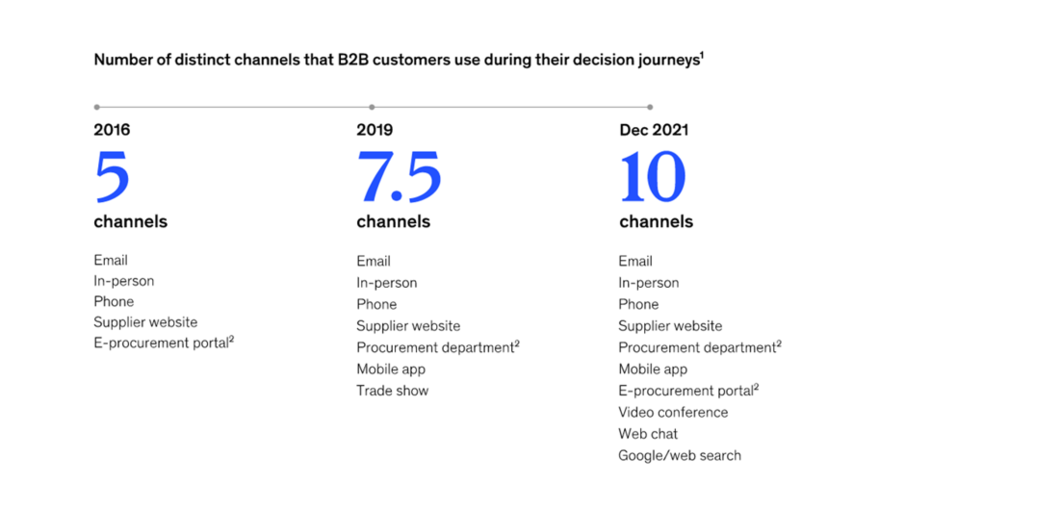
When targeting SMBs the ‘how’ is nearly important as the ‘what’. Your business model is the competitive frontier, defining whether you win or lose. And in CSP-land, whereas 3G was 3G, 4G was just a bit… meh.
5G has the potential to be something else again. But it depends on your business model.
In fact, 5G is the first generation of mobile technology that is more geared towards B2B than mass consumer markets. And while for CPSs B2B has usually equalled large enterprise, perhaps it’s time to look further. In particular, to start considering the SMB market, which is not only pivotal to monetizing CSP 5G investments, but also presents a truly game-changing opportunity to extend into new technologies like IoT and Edge.
Our research demonstrates that a digital marketplace is a great way for CSPs to grow their B2B business faster than ever before. It enables you to connect with industry partners, create new solutions, sell to them in a more personalized way, improve cost efficiency, identify demand and purchase trends, and achieve greater scale.
But guess what, we’re not the only ones who’ve noticed the opportunity. According to McKinsey, 72% of companies that built their own B2B marketplace experienced market-share growth over the past two years. And with over 400 million SMBs around the world generating $17 trillion in revenue, and constantly investing in technology, more and more players are competing to become the digital marketplace of choice for these SMBs and their ICT needs.
In recent years, we’ve witnessed telcos, banks, educational institutes, start-ups and hyperscalers competing for their attention and wallet share. Imagine what doing it successfully can mean for your revenue growth, customer relationship and your 5G ROI.
So yes, you better start doing something. But building a go-to-market proposition that will help your digital marketplace to stand out from the crowd is becoming increasingly challenging. It requires careful planning and execution from the very first touchpoint.
So, what do you have to consider when it comes to promoting a digital marketplace for SMBs?
Well, first off, remember, there are 400 million potential customers, and they’re all unique. No two restaurants are the same. Every construction business is built slightly differently. Even advertising agencies have their own ideas (sometimes).
But it’s easy to fall into the trap of treating them all as one segment, churning out endless ‘one-size-fits-all’ packages and addressing everyone’s common pain points through a single communication and unified message. This stems from the traditional approach of simply selling connectivity services to SMBs. It’s completely understandable, but totally doomed to fail.
You have to be relevant, and you have to engage in the right way. SMBs, especially after Covid, are more keenly aware of the impact technology can have on their business, especially tailored solutions that can benefit certain verticals (e.g., retail or agriculture) and the specific contexts of their business (new business, long established etc.).
Therefore, the entire outreach plan, including promotional materials, website, and the digital marketplace itself should be designed with their specific business in mind, and personalized to meet their individual needs.
The success of a digital marketplace relies on how fast you can connect buyers with solutions. Also, how successful your partners will be in encouraging your SMB customers to buy and use their services, therefore making you the right platform for those partners.
Often, with a new digital marketplace, the number of available solutions limits the ability to offer solutions by business type and context. In this case, it makes sense to address specific but common business problems that resonate outside of any particular industry vertical.
Meanwhile, in this increasingly crowded marketplace of digital marketplaces, encouraging SMBs to favor your offering over others is a growing challenge. When you focus your go-to-market on engagements, you can create meaningful interactions with people rather than simply flashing offers in front of them.
By using data based on who they are and their behaviour, marketing can reach people in personal and worthwhile ways, with the added benefit of moving customers along the sales funnel quicker. This can be achieved by creating an inbound marketing strategy with solid engagement, developing programs that are targeted and strategic, utilizing AI tools, communities and marketing channels.
In most cases, you will have to start promoting your digital marketplace before all the relevance and engagement elements are in place. For example, you might have to begin with only handful of solutions, that are yet to be made specific to any particular industry.
Can you identify any sign of an intent to buy, or an alignment with their past enquiries and your new digital marketplace offerings? Remember, choosing customers that already actively engage with your brand will increase the chances of them reacting to your promotional and campaign material.
Another important consideration is something called the network effect, and you should look to start building this as early as possible. Identifying those customers that are more likely to become success stories and to advocate your marketplace is a strong way to start. And you can use these customers as the foundation of your SMB communities.
A good example of this is Vodafone UK and its ‘Shout Out For Small Businesses’ campaign, encouraging SMBs to share stories of their businesses and how digital solutions have helped them to thrive in the past year.
The final, but very important, consideration is the number of target customers. According to Salesforce analysis, 13% of leads convert to opportunities. And the conversion rate from opportunity to deal is even lower at only 6%. This means that if you’re aiming to reach 1,000 live SMB customers, you will need to target approximately 130,000. (Let’s get started!)
Ultimately, your chances of attracting and converting SMB customers will stand or fall by your messaging. With that in mind, you should always focus completely on who is buying and exactly why they are making that purchase? Therefore, embrace personalization and walk away from that one-size-fits-all approach.
Both your offering and your promotion should be developed from a matrix combining the type of business (e.g. a restaurant or legal firm) with the context (such as the maturity of the business). So, for example, messages like ‘looking to open a new restaurant?’ and ‘need help with your marketing?’, or ‘looking to expand your business customer base?’ will grab attention as the target can easily make the connection between their business needs and your offer. Similarly, the promotional material and the marketing campaign should be built separately. For example, creating individual emails, each one centering around a specific problem.
It's always important to effectively communicate your unique selling point (USP). Why should someone buy from you rather than a competitor? Don’t shy away from being explicit when explaining the value that you bring and why you are different. If you’re selling a more standardized product or service, the value may be in how you sell it (payment terms for example).
Often, we come across digital marketplaces that attempt to attract new customers by offering an appealing upfront discount. While budget stretch is always a consideration, SMBs often won’t simply choose the cheapest option. Our experience tells us that they also place value in ease of transaction, highly rated customer service, reliability, and product quality. According to research, 79% of SMBs buy the best they can afford, not the cheapest they can get away with. Digital marketplace owners who promote their value end up achieving higher returns.
It can be a single point of contact for all your ICT needs such as multichannel and always-on support, or in the case of telecoms, it can be through bundling together software and SaaS solutions with communication services or other telco-owned services. Whatever your value is, it should be reflected across all your promotional activity, content, and within the experience of the digital marketplace itself.
For example, Vodafone UK and Singtel in Singapore placed great value on helping SMBs embrace digitization. Their entire brand, communication, campaigns and promotions, focus on being the guide - the partner that helps SMBs to embrace digital tools. They built communities, lined up inspirational events and created content to help SMBs to digitalize their businesses. Both Vodafone and Singtel have been proactive in offering webinars, technology training, mentoring schemes, and partnering with government agencies on financial support strands to further support this initiative.
According to Marketo, we each see about 3,000 messages a day - of which we will remember an average of just four. In such a reality, building a multi-channel campaign while using different media to deliver the message is the only way to get someone’s attention - regardless of the quality of the data or how beautifully-crafted the copy. As a guide, McKinsey research found that the average number of channels B2B buyers interact with whilst engaging in the decision-making process has increased to 10.

Our research shows that, on average, SMBs need 5-8 touchpoints to feel ready to buy a solution.
One final important factor to remember is this: For SMBs, immediate business-critical needs will always take precedence over strategic purchasing decisions. This can frustrate your efforts to reach them, no matter how good your marketing. So unless you have something they need right now, you will have to push the same message with the same offer several times until the customer is ready to buy.
Bearing in mind that on average, only 3% of your addressable market is actually ready to buy at any single point in time, the sooner you start promoting your digital marketplace, the quicker you’ll find customers for your solutions.
